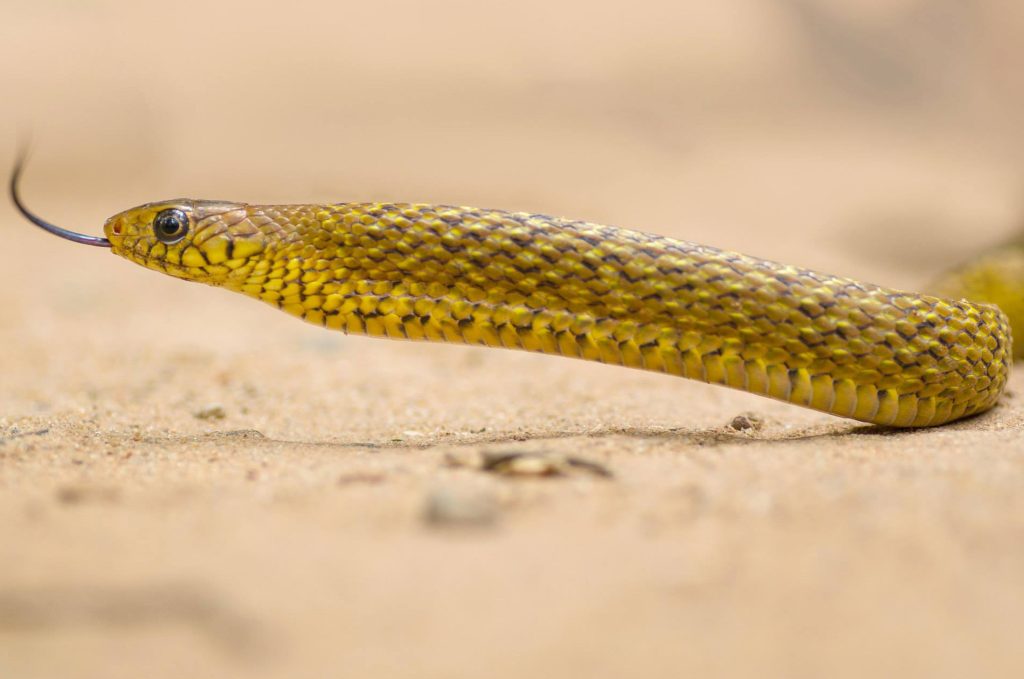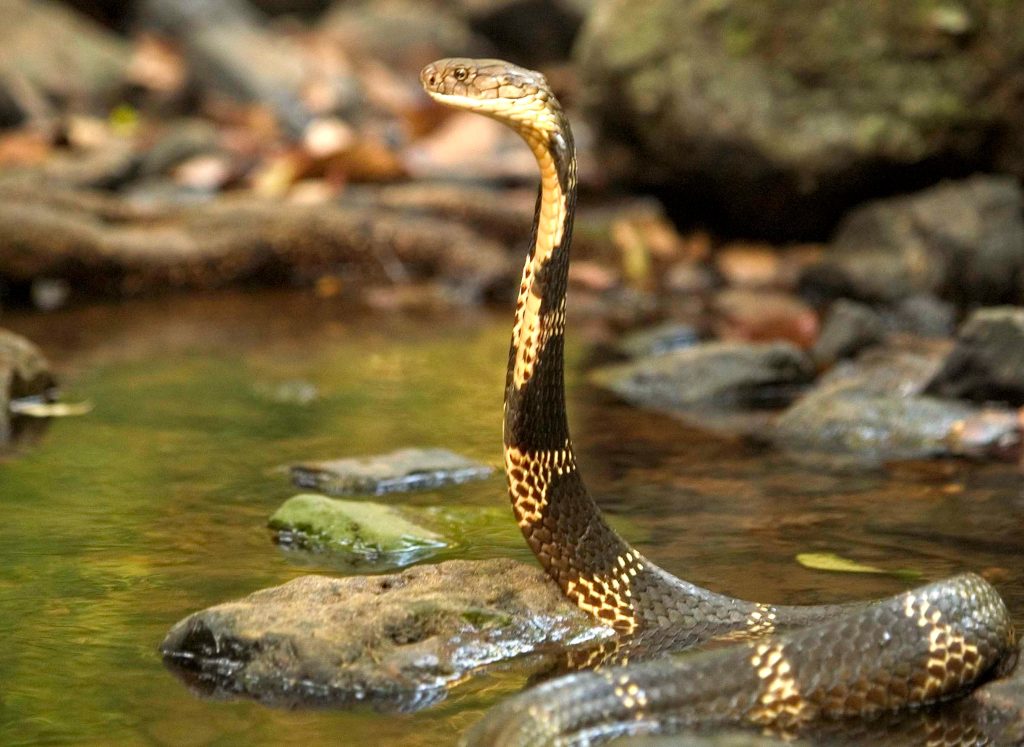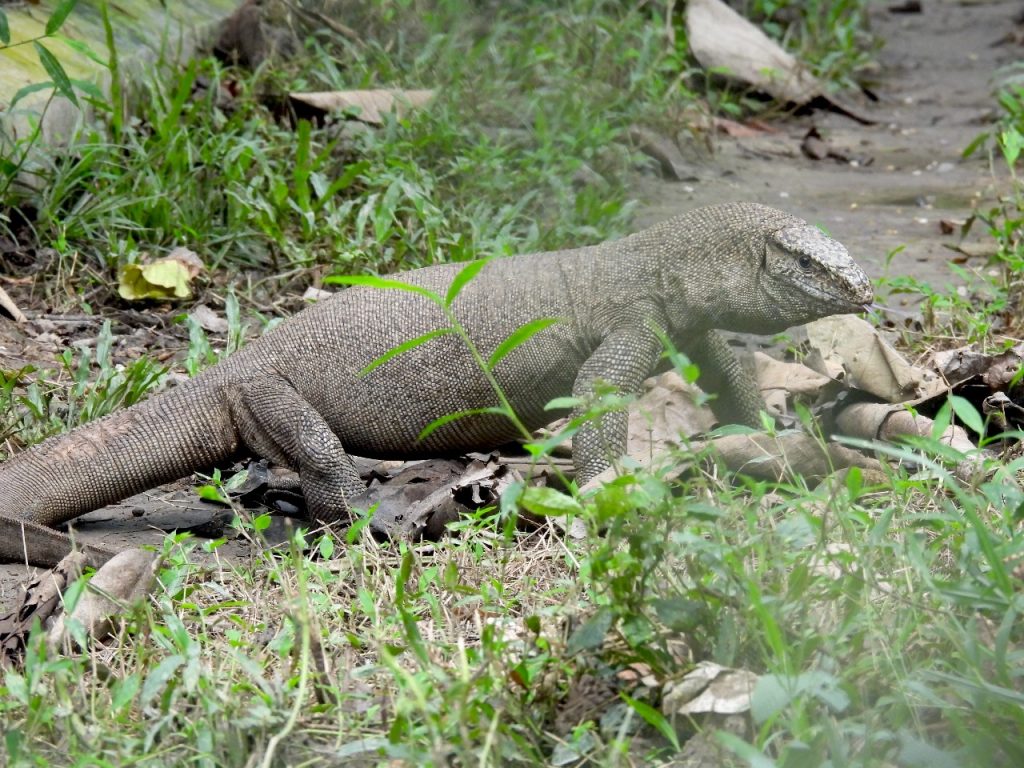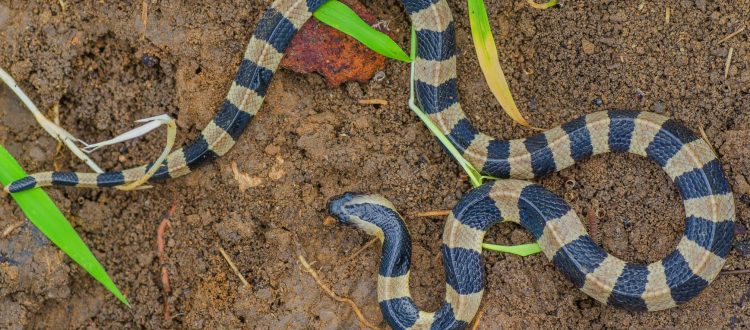It’s raining reptiles: CWRC team conducted 46 rescues in August
When it comes to helping animals in distress, our team at the Centre for Wildlife Rehabilitation and Conservation (CWRC) in Kaziranga, Assam, goes above and beyond. Not only do they commit their days to provide both temporary and long-term care for animals at the centre, but they also take a proactive approach in responding to a wide range of wildlife emergencies resulting from natural or anthropogenic causes.
The past month was quite busy for the CWRC team as they responded to 56 wildlife rescue calls. Of these, 46 were reptile-related operations from in and around Kaziranga, and the districts of Golaghat, Nagaon, Jorhat, and Sonitpur.

Snakes like this Indian rat snake, get displaced from their natural habitat during rains and floods | Photo by Madhumay Mallik, WTI
Why are there so many reptile sightings?
The month of August saw a surge in reptile sightings as a majority of them were caught in human-wildlife conflict situations or had sought refuge in human settlements due to the rains and mild floods. Many reptiles become displaced from their underground burrows due to flooding and are forced to seek shelter in dry areas, often leading them into people’s homes. Due to misconceptions and fears surrounding reptiles, especially snakes, people often tend to panic during such encounters and sometimes end up taking matters into their own hands.
Contrary to popular belief, snakes are non-confrontational but will react instinctively if provoked or threatened. Our continuous work to create and spread awareness about these misunderstood creatures has helped alter the negative perspective people have about them over the years. As a result, more people are reaching out to our team in such situations.
Reptiles commonly found in this region
Among the remarkable rescues, our team encountered some fascinating species this month. These included a range of snakes ranging from highly venomous ones like the King cobra, Monocled cobra, Banded krait and Red-necked keelback to mildly venomous species like the Ornate Flying Snake, Thai cat snake and Green cat snake. We also rescued non-venomous species such as the Copper-headed trinket snake, Burmese python, Indian rat snake and a Monitor lizard.

The King cobra is the largest venomous snake in the world | Photo by Dr. Samshul Ali, WTI
Conducting rescue operations
As we handle an array of reptile species ranging from non-venomous pythons to highly venomous cobras, each rescue must be conducted carefully with precision to avoid any untoward incidents. Backed by decades of experience, the WTI team is well-equipped to handle such operations.
Dr. Samshul Ali, Head and Manager at CWRC, emphasised that the fear of encountering snakes often arises from a misconception that all snakes are venomous, which is not accurate. Encouraging people to familiarise themselves with the appearance, patterns, and behaviour of these snakes, can play a crucial role in ensuring the safety of both humans and animals.

Contrary to popular belief, monitor lizards are non-venomous and pose no threat to humans | Photo by Dr. Samshul Ali, WTI
CWRC’s tireless dedication to rescue and rehabilitate reptiles is a testament to their commitment to wildlife conservation. By dispelling myths, spreading awareness, and conducting rescue operations, our team is making a significant impact on coexisting harmoniously with the diverse reptile population in the region.
You can help support our work by donating and following our rescue efforts on Facebook, Instagram, Twitter and Youtube.









